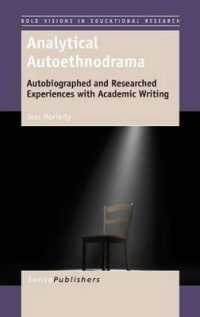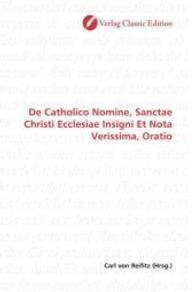Full Description
Therapeutic Spiral Model (TSM) psychodrama is an innovative three stage system of clinically modified psychodrama to treat trauma safely and effectively. This book presents the theoretical evolution of the Therapeutic Spiral Model from a Western model of early trauma-informed therapy to the worldwide system of experiential change that it is today.
This book demonstrates the anchor of classical psychodrama theory and methods modified by clinical observations and awareness of current theories about trauma and how it effects the brain, See the evolution from 1992 to its present structures.
It provides an accessible practice manual of using TSM psychodrama to promote trauma recovery in many cultures, countries, languages and settings. It presents a unique clinical map for intra-psychic experiential trauma therapy connecting classical psychodrama to TSM psychodrama. It demonstrates psychological concepts like projective identification and information from neurobiology for trauma repair in individual and group settings with action methods. The book shows easy-to-understand visual images such as trauma bubbles, therapeutic spirals and the autonomous healing center to help communicate internal states of spontaneity. The authors draw on their own rich experiences teaching TSM psychodrama in the global community and share stories of people's recovery around the world. The audience for this publication includes trainers, practitioners, psychotherapists, trauma workers, and researchers working in a broad array of disciplines and human services.
Contents
Preface- Acknowledgments.- Chapter 1. The History and Evolution of TSM Psychodrama.- Chapter 2. The Experience of Trauma on the Self: Trauma Bubbles, Spiral Images & the Autonomous Healing Center.- Chapter 3. The Trauma Survivor's Internal Role Atom: TSM's Clinical Map for Safety.- Chapter 4. The Roles of the TSM Action Healing Team.- Chapter 5. The Six TSM Safety Structures.- Chapter 6. Clinical Contracts and Types of TSM Dramas.- Chapter 7. Clinically Modified TSM Doubles: The Body and Containing Doubles.- Chapter 8. The Experience of Simultaneous Protagonists in TSM Psychodrama.- Chapter 9. The Conscious Use of Spontaneity in TSM Trained Auxiliaries.- Chapter 10. Enacting the Victim and Perpetrator Roles with Controlled Regression.- Chapter 11. A TSM Prescriptive Role Drama: Strengths and Containment.- Chapter 12. A TSM Trauma Drama: The Structure of the TSM Trauma Triangle.- Chapter 13. A TSM Post-traumatic Growth Drama: The Sleeping Awakening Child and theAppropriate Authority.- Chapter 14. Zoom is the TSM Brain in Action: Expanding Online.- Chapter 15. Sociometric Diagrams of Projective Identification in TSM Groups—invited chapter by Ina Hogenboom, MSc, TEP, Psychodrama Training and Coaching, the Netherlands.- Chapter 16. Celebrating TSM Psychodrama through the Art of Integration- References- Appendices.








